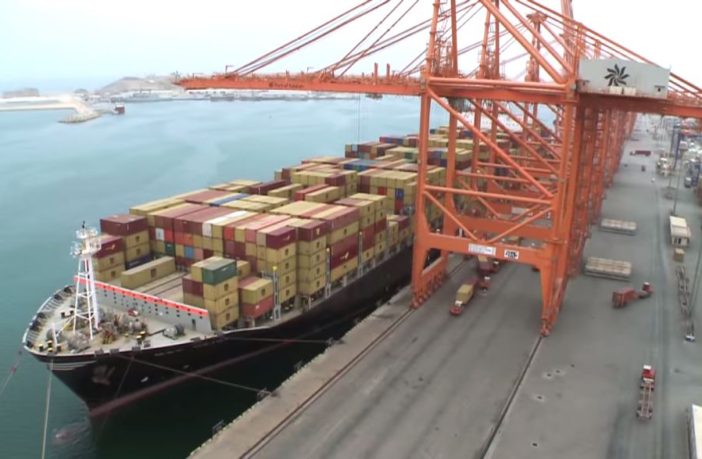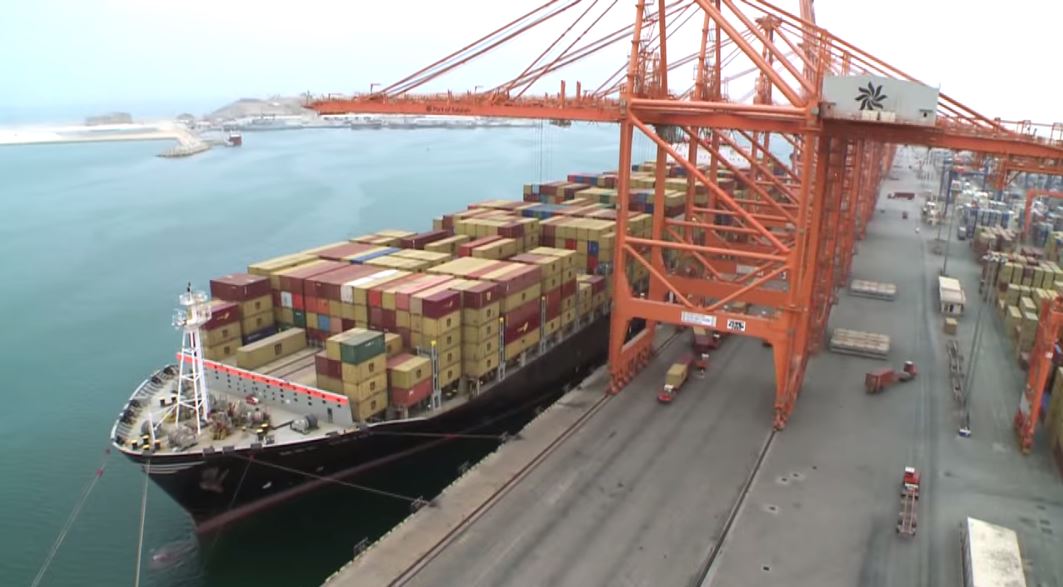Hellenic Shipping News Worldwide
Morocco unveiled a huge extension to its Tanger Med port in Tangier at the end of June, signalling its intention to overtake major European rivals.
Last year, Tanger Med handled 52m tonnes of goods. On 28 June, the port launched two new container terminals, hoping to be among the top 20 ports in the world.
• Tanger Med 2 triples the port’s capacity from 3m to 9m 20-foot equivalent units (TEUs).
• It becomes Africa’s leading container port, surpassing Port Said (Egypt) and Durban (South Africa).
• The expansion project required €1.3bn in investment. The Tanger Med Special Agency (TMSA) plans to allocate a further €28m to extend the passenger and roll-on/roll-off terminals.
41-year-old Rachid Houari joined the Tanger Med Port Authority (TMPA), a subsidiary of the TMSA, in 2005. He was appointed central port director in 2012.
• Port and maritime engineering graduate from Solent University in Southampton
• MBA from École des Ponts Paris-Tech.
• First piloted the hydrocarbon terminal.
The port’s central director, Rachid Houari talks about the ambitious plans to unseat their Mediterranean competitors.
Why was it strategic to build Tanger Med 2?
Rachid Houari: We had to seize traffic opportunities as soon as possible, otherwise others could have taken them. The container business had reached a saturation point. Last year, volumes handled totalled 3.4m TEUs, exceeding our capacity by 15%. Thanks to Tanger Med 2, we have the largest capacity in the Mediterranean region for container activity. We’re ahead of Spanish, French, Italian and Greek ports.
Is this extension a simple increase in capacity?
No, it’s more complex than that. Certainly, Tanger Med 2 is twice as large as Tanger Med 1, boosting the container storage area from 80ha to almost 200ha. But, the new port facilities also deliver technological changes. Since 2007, the way ports are designed has evolved, with increased automation of transhipment operations and greater draughts.
In Tanger Med 2, the output per ship will be higher. Operators can allocate up to eight cranes for loading or unloading a ship. In addition, the entire Tanger Med 2 basin is 18m deep. Previously, only part of the port complex reached this depth. This allows us to accommodate the world’s largest ships (400m long, with a capacity of 22,000 containers). The port can hold seven vessels at a time. This is not possible anywhere else in the Mediterranean.
Can you describe the relationship between the port authority, which you represent, and the various terminal concessionaires?
Things are clear and the relationship is good. The TMPA sets up the wharves and basins, the harbour master’s office and the pilotage system, allowing ships to get in and out quickly. We are also responsible for tenders for the management of the quays, awarded for a period of 30 years, and must ensure their proper implementation. On the other hand, it is up to the selected concessionaire to equip the platforms by investing the agreed amounts and to train the necessary staff. It must also ensure a contractually defined minimum traffic level.
Tanger Med 1’s operators, APM Terminals and Eurogate, have invested approximately €150m each. The Dutch operator, APM Terminals also manages TC4, a container terminal at Tanger Med 2, where it’s invested €900m.
Marsa Maroc, Eurogate and Contship Italia manage the other platform, TC3. The consortium is investing nearly €200m. The last two operators have been meeting their commitments and paying their fees on time for 12 years. At the end of the concession, the contract provides for the possibility of renewal over a shorter period, in return for an investment to upgrade the superstructures, truck fleet and cranes.
How does Tanger Med interface with other means of transport, like land and air?
Renault’s decision to build an automobile plant near Tanger Med depended in particular on the availability of a railway line linking their facilities to the port area. Every day, six trains carrying Renault vehicles arrive at the port, and two more will soon be added from the new plant in the city of Kenitra. It’s located 245km south of Tangier, on the Atlantic coast.
Two other trains loaded with hydrocarbons leave the port daily, while four others carry ship passengers. We are also considering the installation of cereal trains. All our terminals are now connected to the rail network. In addition, the motorway reaches the port of Tanger Med. No less than 330,000 trucks pass through it every year, travelling between Europe and Morocco. Finally, large logistics operators based in the free zone can use the nearby Tangier airport, especially in emergencies.
How do you explain that 40% of Tanger Med’s freight traffic is with West Africa?
By geography and by our performance! West Africa is on a sea route along the Atlantic coast along a north-south axis, which crosses the flows to Asia (east-west axis) at Tangier. A transhipment of goods in Tanger Med between vessels on these two axes saves maritime carriers up to 10 days compared to other Mediterranean ports.
What specific links have you established with other African ports?
In recent years, several sub-Saharan ports have sought to draw inspiration from our experience. In particular, we were asked for training sessions, as well as to help redesign the management model of several port terminals. We have created Tanger Med Engineering, another subsidiary of the TMSA agency, which brings together 70 experienced engineers and technicians. Its teams have already gone on missions to Senegal, Côte d’Ivoire, Cameroon and Madagascar.
Source: The Africa Report








